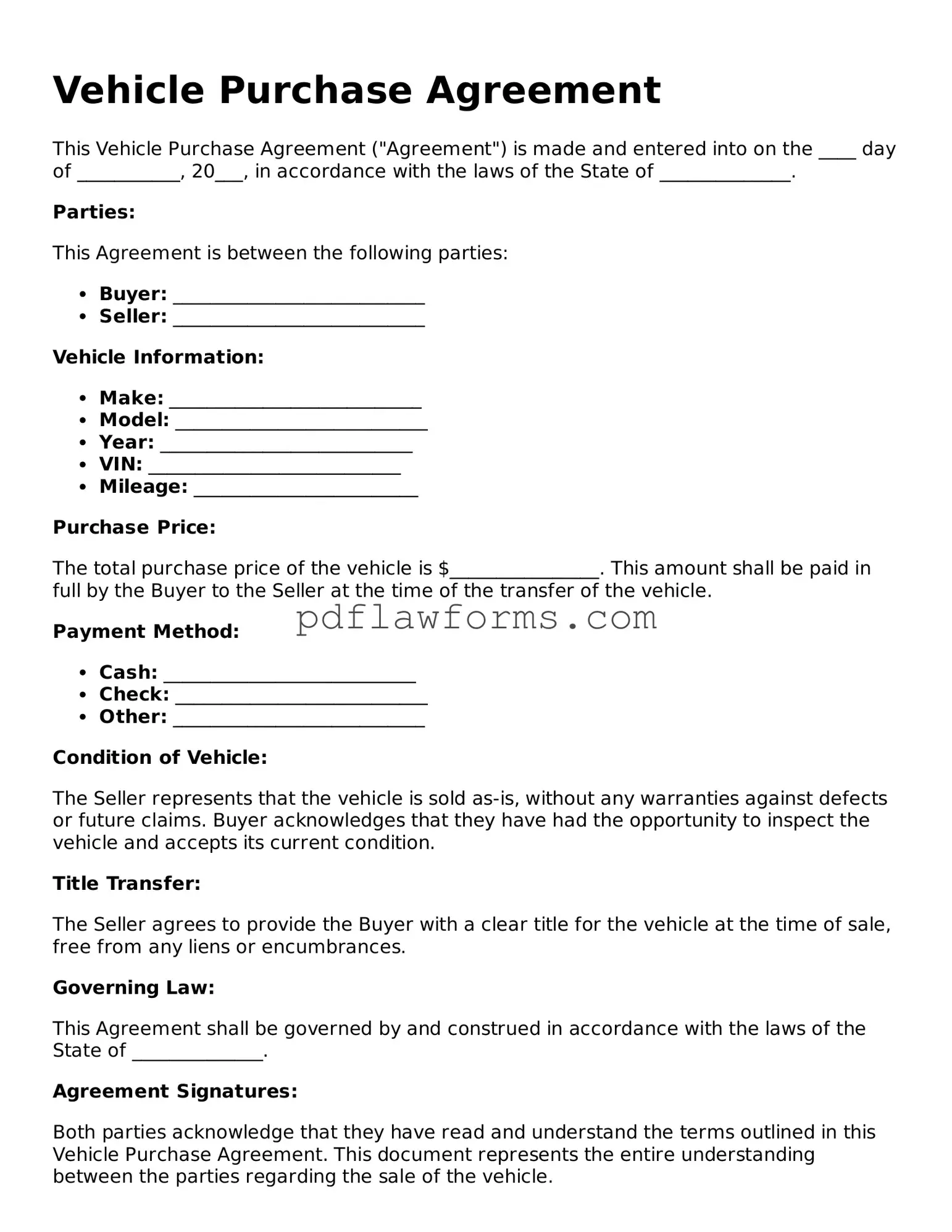Official Vehicle Purchase Agreement Form
A Vehicle Purchase Agreement is a legally binding document that outlines the terms and conditions of a vehicle sale between a buyer and a seller. This form ensures that both parties understand their rights and responsibilities, making the transaction smoother and more transparent. Ready to take the next step? Fill out the form by clicking the button below!
Make My Document Online
